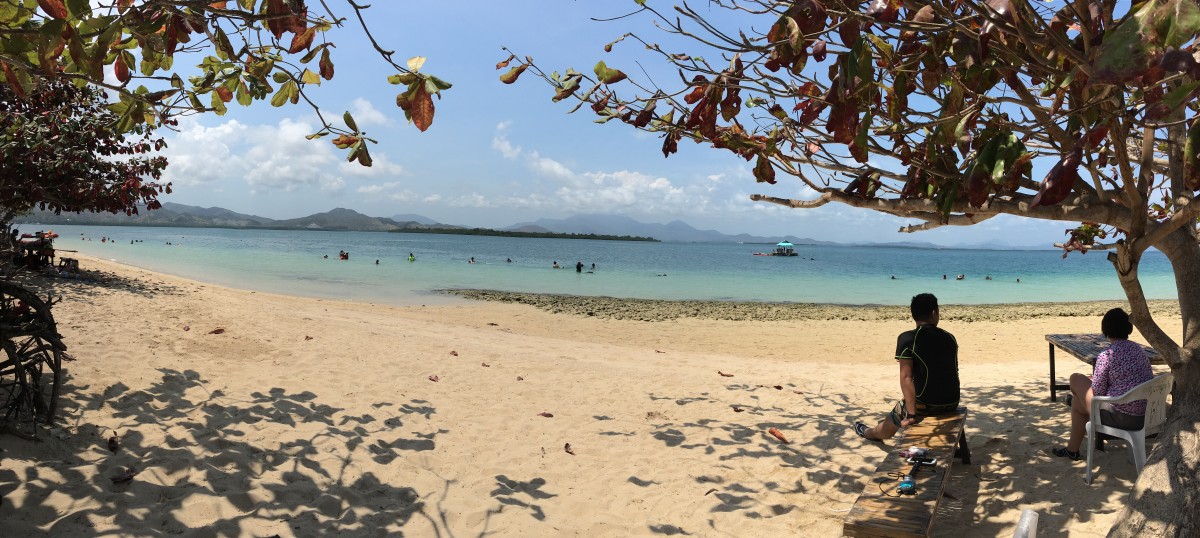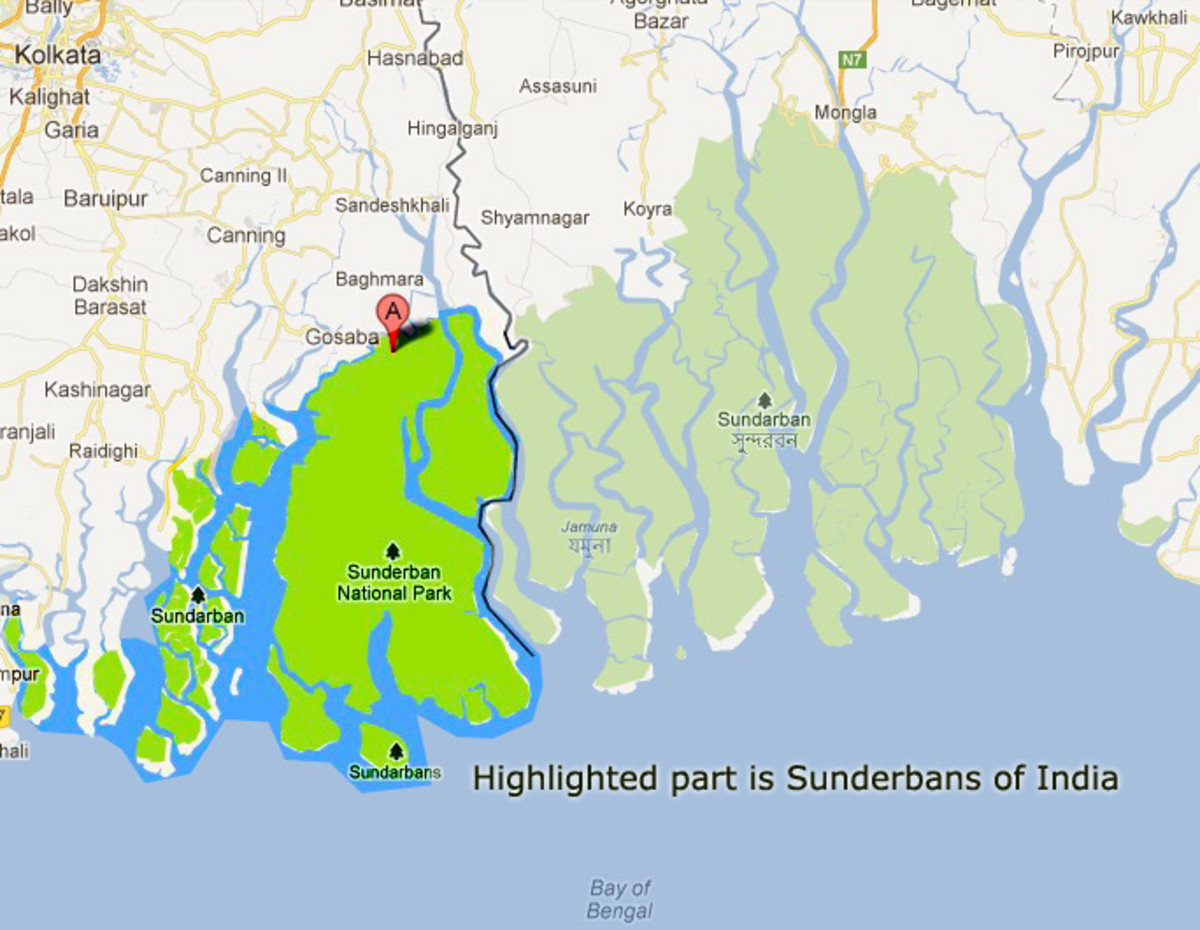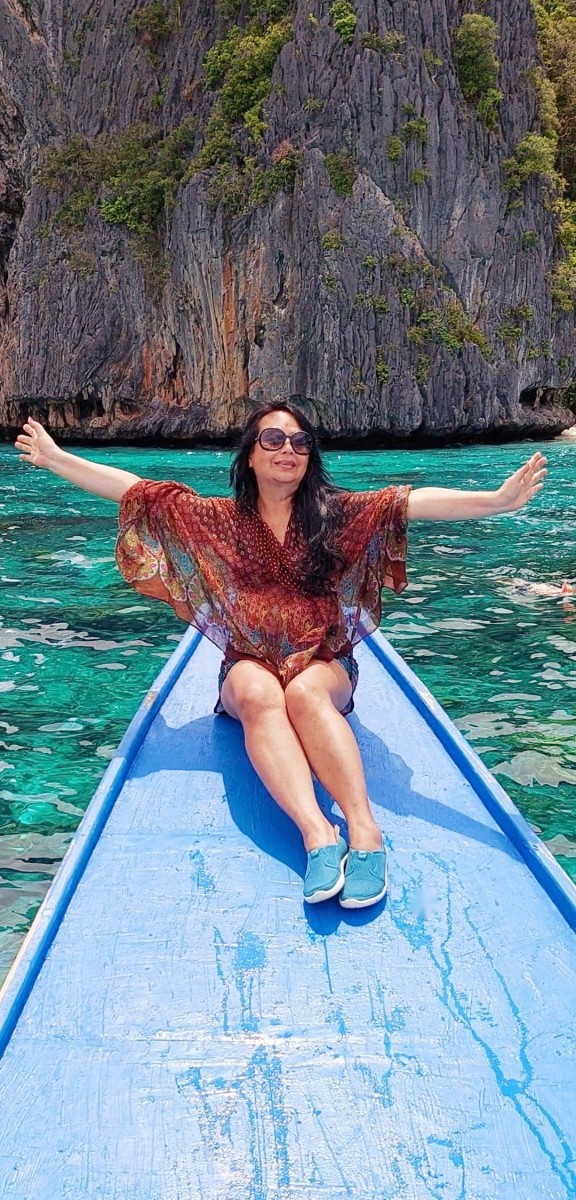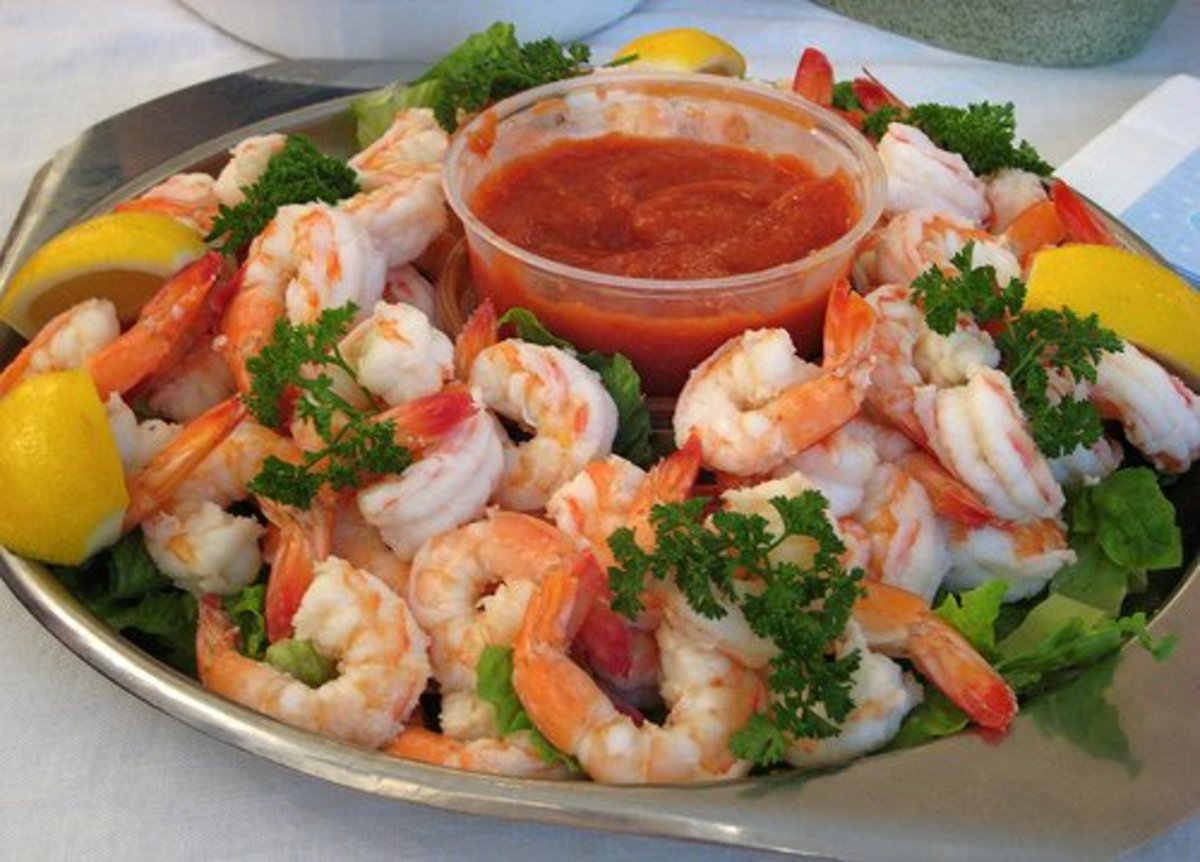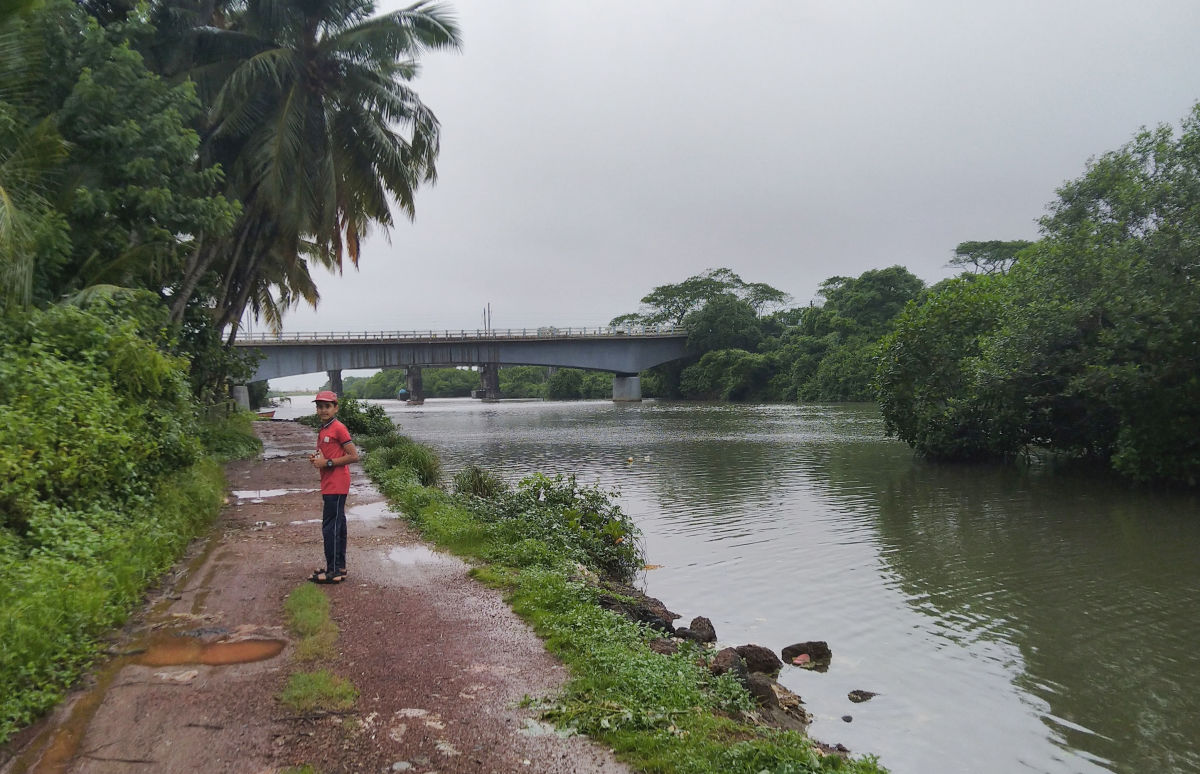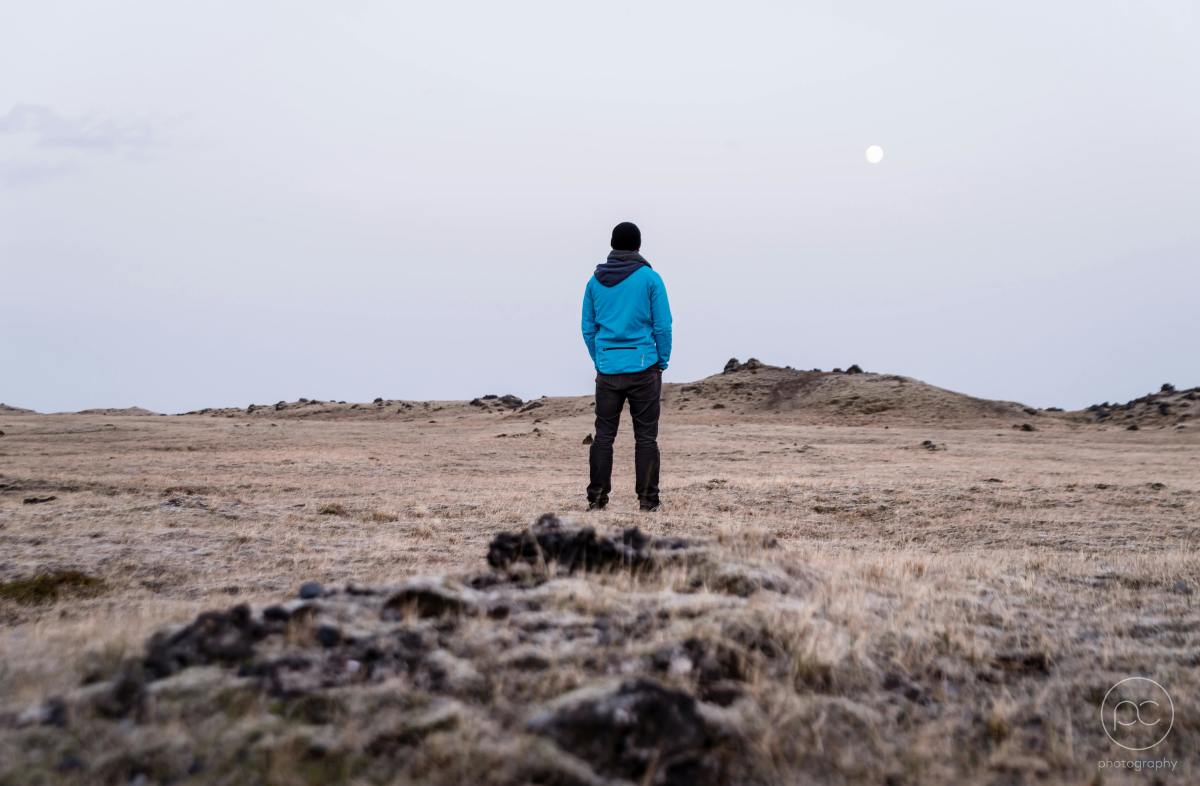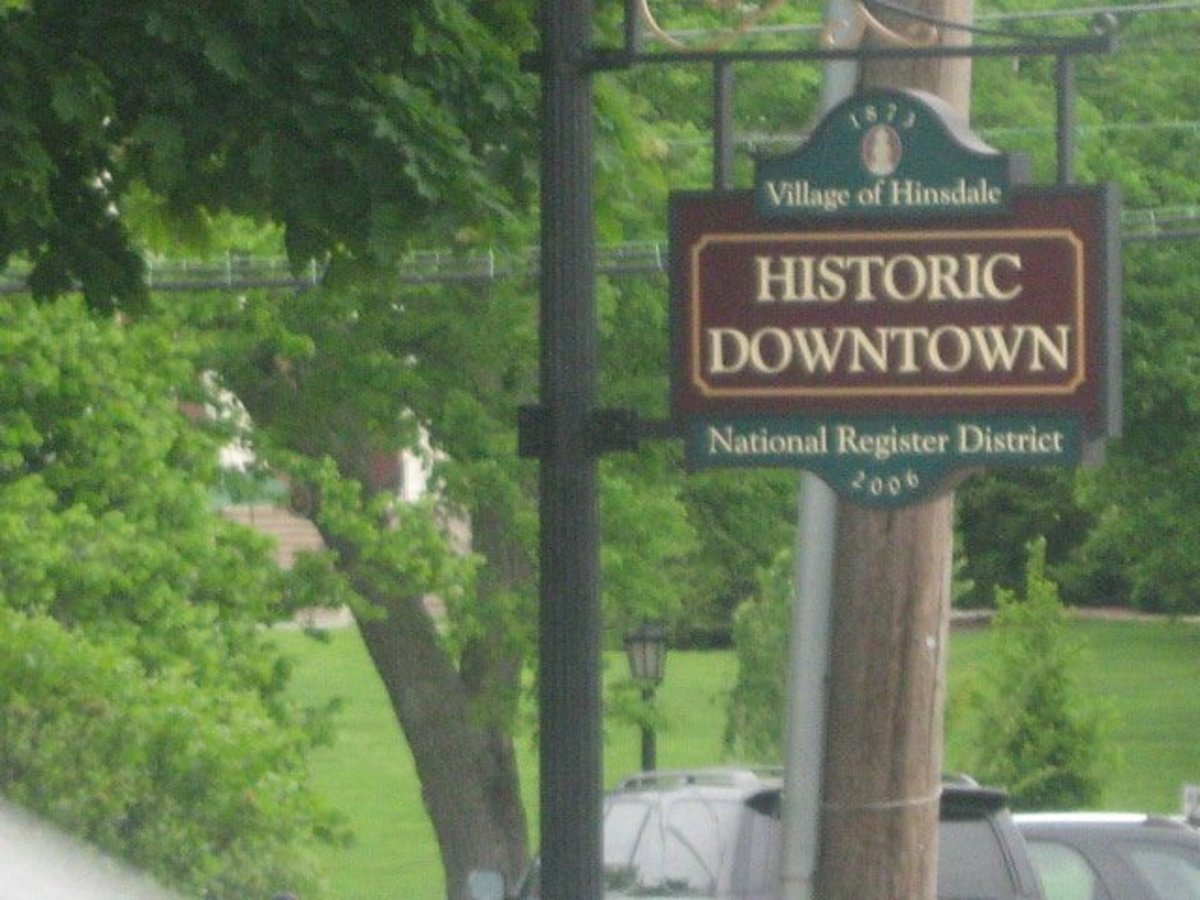I Recommend a Mangrove (Bakawan Tree) Paddle Tour in Puerto Princesa, Palawan, Philippines
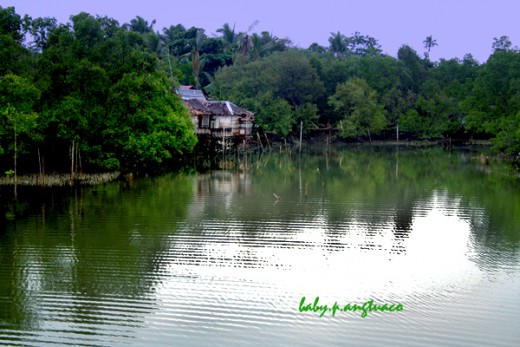
“No, I am not interested in doing a mangrove tour” - I told our tour guide. I even told her (with a bit of pride in my voice) that, “my hometown is near a river so I have seen all the mangroves I need to see in my lifetime”. Little did I know that I will have to eat humble pie, an hour later.
What made me decide to take the tour? Well we were told by our guide that our schedule to the Underground River in Puerto Princesa was still at 3pm. At that time it was only 10:30am. So I thought, I might as well go because I did not want to just wait under a tree for 4 ½ hours! Besides, our guide told us that the site of the tour is being maintained by the natives of the place.
Well, if I can help the local people by joining the tour, I am all for it. I justified to myself.

So there I was, a reluctant mangrove tourist. I did not even bother to take photos of the entrance to the site because I knew I was there just to pass the time away.
However, I must admit that after the tour, I have been raving about it ever since.
No, I have not seen anything like this mangrove before! It’s totally different from the mangroves of my childhood. And I highly recommend that you take the Mangrove (Bakawan) Paddle Tour of Puerto Princesa before or after your Underground River tour.
Below is the link to my hub on this.
I-Recommend-a-Visit-to-the-Underground-River-of-Puerto-Princesa-Philippines

A Bit of Background about Mangroves
Mangroves or "bakawan" abound where salt and freshwater meet so they are found along mouths of rivers and harbour both land and sea species.
The diverse species of plants and animals in mangroves are well-adapted to the daily fluctuations in salinity and water level in these areas. Thus, these various species, especially the plants, exhibit interesting structures for survival.

The first thing that you will notice in mangrove plants is the root system. Since the plants are either submerged during high tide or exposed during low tide, their root system is quite distinct. They have to be strong to withstand constant erosion. At the same time, the roots need protection from being water logged.
Just like other living things, plants also need to breath. But how does one breathe underwater?
People have solved this underwater breathing problem by using snorkels and/or underwater gear. But what about the plants, how do they breathe when submerged in water and mud?
Well, mangrove plants have structures called aerial roots. Their root systems are designed in such a way that these roots stick out above water and have little holes called lenticels where air passes through.

There are however two major designs to these aerial roots. The first design is what I would call as a “snorkel-like” design. The bigger roots of a mangrove tree like Avicennia , extend out from the trunk like underground cables. From these major roots, smaller roots emerge and stick out from above the water much like snorkels.
These snorkel like structures are called pneumatophores. Mangrove trees with pneumatophores are the ones that are common in my hometown.
Trees of this kind are small - medium size, usually only about 40 feet tall, and have extensive pneumatophores.

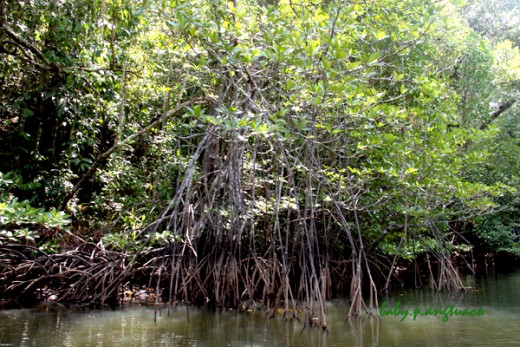
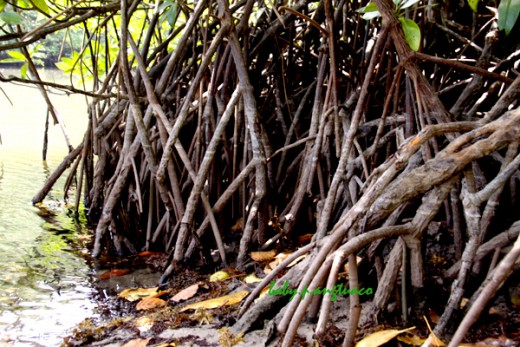
Mangrove trees or "bakawan" that line the riverbanks in the Mangrove Paddle Tour of Puerto Princesa are however of a different kind. Their root system does not have “snorkels” or pneumatophores. Instead, they have prop roots that extend from the trunk as well as high up from the branches.
So their root breathing system is more like stand-up fans of varying height. The prop roots are covered all over by lenticels.
These trees with prop roots are very tall extending to heights of 90 feet or more. Examples are several species of Rhizopora or “bakawan”. Our boatman mentioned that the trees in that site are already centuries old, so they are not only tall but also huge.
So imagine a river tour with tall, huge trees all around. And with prop roots that are hanging from branches.


On to the Mangrove Paddle Tour of Puerto Princesa
About 6-8 people including a boatman make part of one boating team.
As you paddle along the river, the boatman engages you with a running commentary about the mangrove trees.
For example, he mentioned that the Rhizopora or “bakawan” has a male and female tree. The sex can be differentiated through their leaves. Male trees have slim and pointed leaves while female trees have wider and blunt leaves.
Our boatman also mentioned that there are several species of Rhizopora down the river but it was rather hard to see the difference from where we were.
We could not get close to the trees because there were prop roots all over. You have to evade them or you might get caught among the dense roots.
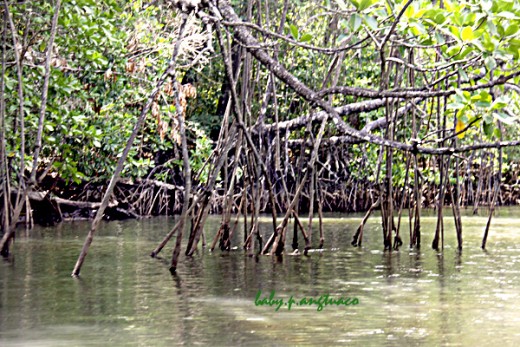
The trees are not that tall near the mouth of the river. However, deeper into the mangrove forest and river, the scene changes. The site is darker and cooler and looks like one of the scenes from “Lord of the Rings”. The trees are so tall and their prop roots are long and massive. Only a fog and weird sounds are missing to complete the surreal scene.
I half expected to see some supernatural creatures come out from among the trees but the only beings we saw were several birds and some snakes hanging from the branches. They were too far away though because of the height of the trees, so I could not get any clear shot even with my 200mm zoom lens.
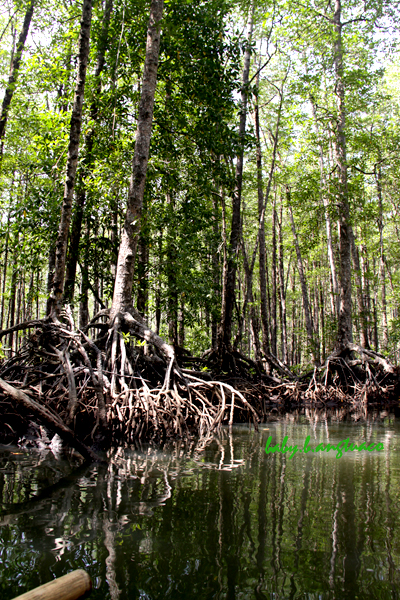
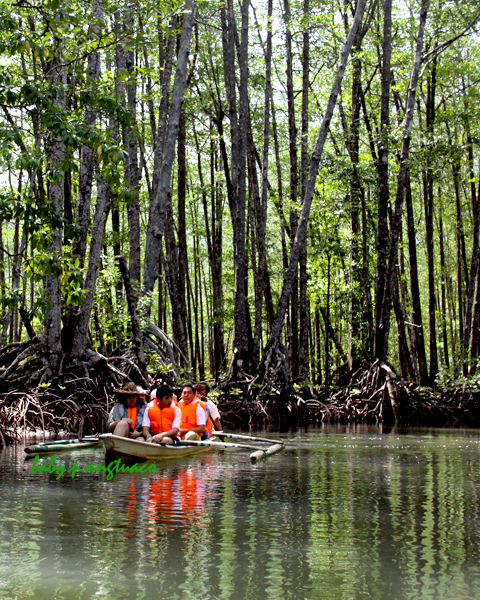
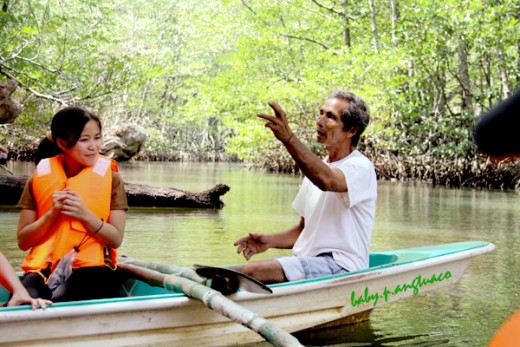
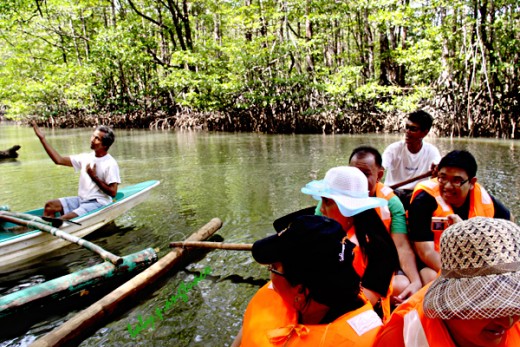
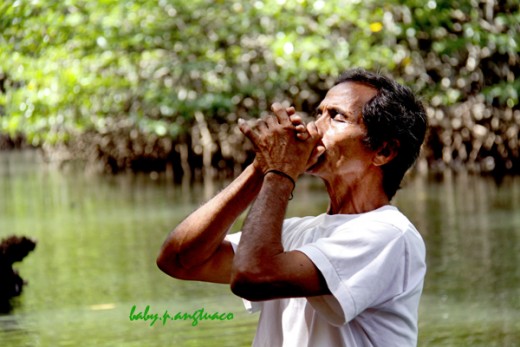
Performance by Mang Untoy
Halfway back to the docking point, we spotted a boat that looked like it was stranded. However, when we came closer, we were told that the group actually was waiting for us. Why?
Well, we learned that part of the tour was a performance by the boatmen. Since the boatman in the other boat was the lead performer and our own boatman was only a supporting actor, they waited for us so we could witness a complete performance.
Mang Untoy the star of the show, started singing complete with hand and feet movement while our boatman joined in the song.
They sang about the importance of the mangrove, the various species in it and the many benefits derived from it. They sang about taking care of the mangrove and maintaining its biodiversity. The song has both English as well as Pilipino versions.
It was quite a performance! Mang Untoy even “played” some musical instruments with just his hands. It was indeed a good ending to our mangrove tour.

Tamilok, an added Bonus to the Mangrove Tour
As we got off our boat, we were offered a taste of “tamilok”. This is a delicacy that is made from shipworm or Teredo (actually a mollusc that looks like a worm). This mollusc burrows into the wood of ships as well as dead mangrove trees. That’s why the name, shipworm.
The delicacy is prepared by removing the entrails, dipping the mollusc in vinegar and garnishing it with onions, ginger and chilli peppers.
I had to say "pass" to this part of the tour because I have tasted this in my hometown before. I guess it is a common delicacy where there are mangrove forests because mangrove is the home of this mollusc.
By the way, there is a story why the mollusc is called
“tamilok”. The story says that the natives overheard an American telling his
pal, “Tommy, look!,” as he pointed to the “worm” being eaten by the natives. So "tamilok" became the name.
I have no idea if this story is true or not. In all likelihood, it’s probably one of those stories created under the influence of liquor. “Tamilok” is a favourite “pulutan” (food eaten while drinking) during drinking parties.

Join the Mangrove Paddle Tour
So, if you have time before or after your Underground River Tour, I recommend you give the Mangrove Paddle Tour a try.
You will not regret it, I promise. And taste a "tamilok" at the end of your tour.


